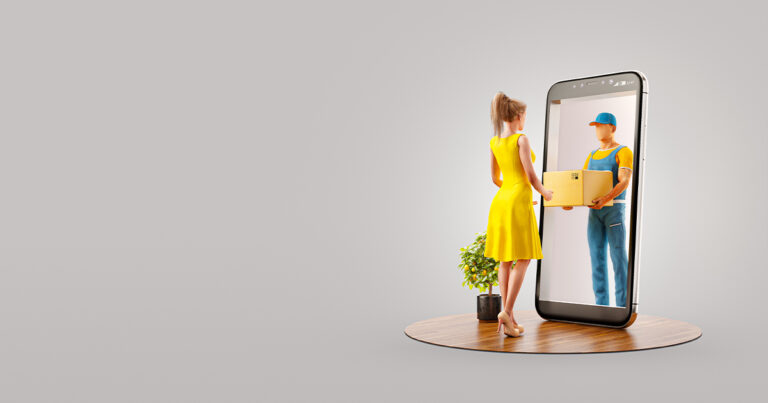There’s money to be saved in the grey zone.
Grey import phones explained

For those who prefer to buy their phones outright, it only makes sense to shop around for a good deal. But have you ever wondered why some websites are just so much cheaper than others? Take Samsung for example. On their website, the Galaxy S21 Ultra is listed between $1,849 and $2,149. Over on Kogan, it’s selling between $1,611 and $1,979 (at the time of writing) - a massive difference in price. So what’s the catch? That’s where the phenomenon of grey import phones come in.
What are grey import phones?
Simply put, grey import phones (also referred to as “parallel” or “direct” imports) are international versions of phones that have been imported from overseas without an agreement from the manufacturer. Because they’re bought from a different country in a different currency, it means the retailer can sell the phone to you for cheaper than official Australian stock, all the while making a neat profit.
In addition to offering consumers cheaper versions of the phones they know and love, grey imports also allow buyers to consider brands, models and variants that aren’t officially sold in Australia (like OnePlus, for example).
Are grey import phones legal?
Grey imports may sound a little shady, but they’re actually perfectly legal. That said, manufacturers aren’t so keen on them - after all, they’re potentially losing out on a couple extra hundred bucks.
The difference between grey import phones and domestic stock
Model differences
Even though a phone may be sold under the same name in every market, there can be slight differences in specs depending on the country of origin. This could mean different processors, different storage options, and different colourways. While the latter two don’t matter too much (unless you’re really after that pastel blue model), a different processor could mean significant variation in performance, coverage (which we’ll get into in more detail below), and battery life.
Charger compatibility
Even though some manufacturers have stopped including power adapters with their new phones, many still do, and that can present a complication for buyers outside the market they’re specifically made for. A lot of retailers who sell grey import phones will throw in a generic Aussie power adapter, but it probably won’t be the same quality (or offer the same charging speed) as its official counterpart.
Coverage and network
This goes back to the model differences we mentioned earlier. Australian phone models sold through official retailers are guaranteed to run on our mobile networks. However, the same can’t necessarily be said for international models. As our mates over at WhistleOut explain, the codes you’ll want to look out for in the spec sheet of the grey import phone you’re looking at are UTMS and HSDPA for 3G coverage, FDD LTE for 4G coverage, and 5G NR for 5G coverage. Here are the frequencies and bands currently supported in Australia:
Which retailers sell grey import phones?
Most brick-and-mortar retailers (like JB Hi-Fi, The Good Guys, Officeworks, and Harvey Norman) are official retailers for phone manufacturers like Apple, Samsung, OPPO and more. If you buy your phone from there, though it may be a little pricier, you can be sure you’re getting Australian stock.
Usually, you’ll only find grey import phones for sale through online-only retailers like Kogan, Catch, Dick Smith and Amazon. However, it’s important to remember that these retailers also sell official Australian stock, so you’ll want to read the fine print to make sure you know what you’re getting.
What about consumer rights and warranties?
Low prices almost always come with a catch, and for grey import phones, it’s a pretty big one: consumer rights and warranties.
According to the ACCC, you have the same consumer rights when buying grey imports as you do if you walked into JB Hi-Fi and bought an iPhone right off the shelf. Basically, that means if the device is faulty, you may be entitled to a repair, replacement or refund. The thing is, it’s the seller’s responsibility to remedy the issue - not the manufacturer. The seller cannot refuse to help you, nor can they ask you to contact the manufacturer.
That’s all well and good if you purchased through an Australian reseller, but if you bought your phone from an international retailer, you could face a logistical and legal nightmare trying to enforce your Australian consumer rights on an overseas business.
As for warranties, it gets even trickier. There’s no guarantee that your grey import phone will come with a manufacturer warranty, and even if it does, there’s no guarantee that warranty will apply in Australia. This could make repairs difficult, expensive, and long-drawn-out processes, leaving you phone-less for weeks, or potentially even months.
So, should I buy a grey import phone?
Having purchased grey import phones in the past, I personally haven’t had any issues. Still, my experience is not reflective of everyone’s - ask the right person, and they’ll vehemently warn you against it.
Consumers considering a grey import phone need to toss up what’s more important to them: saving money or saving a headache in the event of a fault. As a broke uni student back in the day, the savings were worth it. Nowadays, I’m much more on the fence. Still, if you’re keen to proceed, we recommend sticking with a well-known Australian retailer like Kogan or Catch.
Related Articles




